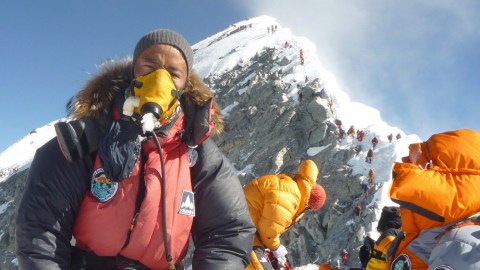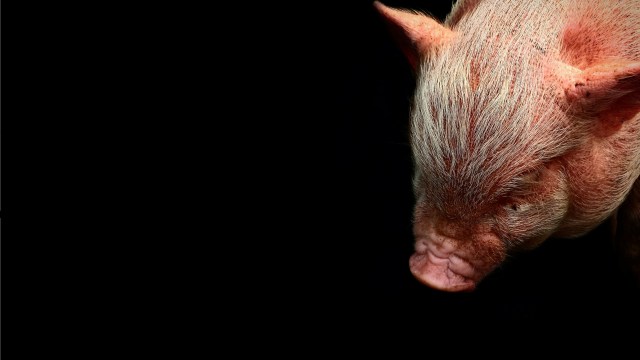That NASA twin study using astronauts? It’s being replicated on Earth—with mountain climbers.

The NASA twin study compared astronaut Scott Kelly’s bodily functions to those of his twin brother back on Earth, and it showed that extended space travel likely wreaked some havoc on Scott Kelly’s body.
Now, two climbers—20-year-old Dartmouth College sophomore Matt Moniz and 49-year-old professional climber Willie Benegas—are spending a month on Mount Everest to see the differences between them and their twin siblings, who will stay at sea level during the same period of time.
The NASA study recorded changes in the astronaut’s organs, cognitive function, immune function, microbiome, proteins, metabolites, and genes while he spent an entire year aboard the International Space Station. His identical twin, Mark Kelly, was also studied. Notably, Mark Kelly had been to space before, so the study was conducted specifically about this particular year-long mission, and if there were specific changes related to space travel itself, those would not be part of the conclusion since both had been to space.
What they found was that seven per cent of Scott Kelly’s gene expression—how his systems reacted to living in space for an entire year—changed during his time up there. This included how his body responded to insufficient oxygen, higher levels of CO2 in his blood, DNA repair, and even bone formation.
What this second, Earth-bound twin study might show is that it wasn’t the full year in space, but rather, the actual stress of the experience that caused the changes in gene expression.
Tatum Simonson, a geneticist at the University of California, San Diego who studies genetic adaptations to high altitude, says the study will potentially offer unique insights into how humans respond to environmental stressors.
Online News Editor for ScienceMag.com, Catherine Matacic, described it further in a podcast:
“What was really interesting about this space study… Is that six months after Scott Kelly returned to Earth, changes to the expression of many of his genes… after six months, seven per cent of those [changes] remained.
“Are these changes actually because he was in space, or were they simply because he was exposed to a lot of extreme stressors—one of which is low oxygen?”
Provided the pair can continue obtaining the samples in the extreme environment at the top of Everest, perhaps researchers will have some more data to chew on in a few months.
Here’s former astronaut Ron Garan on the political importance of the International Space Station:





